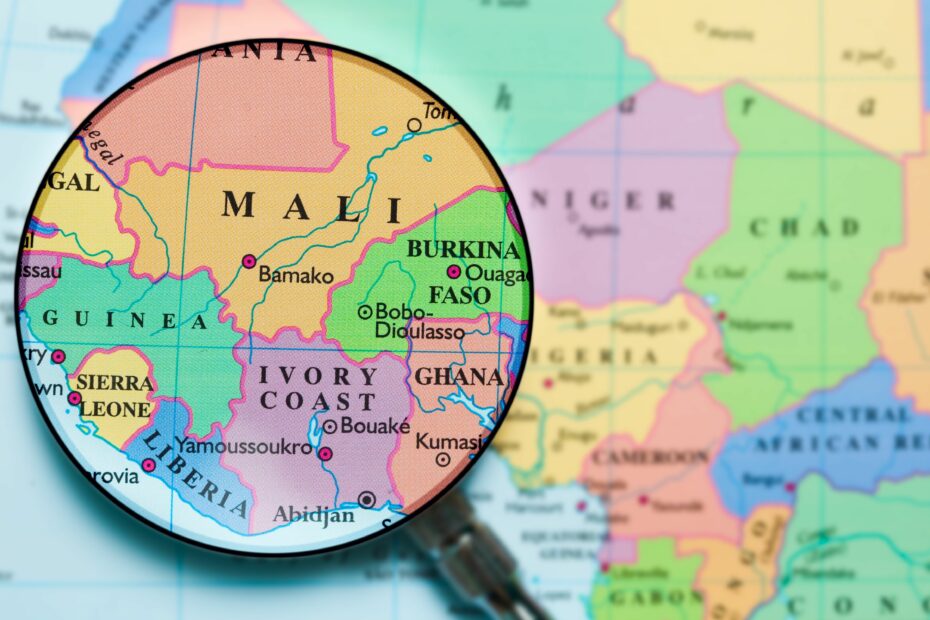Situated on the West Coast of Africa, Guinea is a country that often goes unnoticed on the world’s stage, yet it is a place of profound beauty, rich history, and vibrant culture. Overshadowed by better-known neighbors, this hidden gem harbors secrets waiting to be discovered, stories waiting to be told, and traditions waiting to be shared. Whether it’s the rhythmic beat of the djembe drifting through the night, the historical tales of brave tribes, or the breathtaking sight of its untouched landscapes, Guinea is a place that captivates and enchants.
Geography and Climate
Guinea is characterized by its varied geographical features, which range from coastal plains to mountain ranges. The coastal region boasts beautiful beaches and mangrove swamps, while the highlands of the Fouta Djallon, a breathtaking mountainous region, dominate the interior. The mighty Niger River punctuates this geographical diversity, the lifeblood of the country, which meanders through its terrain. Read Also: The Top 8 Smallest African Countries [With Pictures]
The climate of Guinea is predominantly tropical, with a wet and a dry season. The wet season, from April to November, is characterized by heavy rainfall brought by the southwest monsoons. The dry season, lasting from December to March, is influenced by the harmattan, dry wind from the Sahara. The coastal region is generally cooler than the interior, with temperatures ranging from 16°C (60°F) to 33°C (91°F), while the highlands experience a more temperate climate with cooler temperatures.

History
The history of Guinea is a tale of powerful empires, colonial rule, and eventual independence. From the 10th to the 15th century, Guinea was part of the Mali Empire, which was known for its wealth and cultural significance. Later, Guinea witnessed the rise of the Fula and Mandinka kingdoms. Portuguese explorers arrived in the late 15th century, marking the beginning of European contact.
Guinea came under French colonial rule in the late 19th century, becoming part of French West Africa. The French rule was marked by economic exploitation and cultural imposition but also led to modern developments in infrastructure and education.
The struggle for independence began in the mid-20th century, led by charismatic leader Sékou Touré. Despite intense pressure, Guinea voted against joining the French Community in 1958, leading to its full independence on October 2, 1958. Guinea became the first French colony in West Africa to break free from colonial rule. Touré became the country’s first president, and his rule, which lasted till 1984, was marked by both progress and repression.
In the modern era, Guinea has faced challenges, including political instability, ethnic conflict, and economic struggles, but it continues to strive towards growth and development. Today, Guinea is forging its path, driven by its rich natural resources and the resilient spirit of its people.

Culture and Traditions
Guinea is made up of different cultures, with over 24 ethnic groups cohabitating harmoniously, each with its unique traditions and customs. The two largest ethnic groups, the Fula and the Mandinka, have greatly influenced Guinea’s cultural origin. Music and dance form the heart of Guinean culture, with traditional musical instruments like the balafon (a type of xylophone) and the kora (a 21-string harp) providing the rhythm to many celebrations and ceremonies. Djembe drumming sessions, known for their high energy and intricate rhythms, are a common sight.
Local crafts reflect Guinea’s artistic heritage, with wood carving, cloth weaving, and pottery being significant traditional crafts. Colorful tie-dye and batik fabrics are popular, often featuring geometric patterns and animal or nature-inspired motifs.
Guineans are known for their warm hospitality, a trait deeply embedded in their culture. Visitors are often welcomed with a traditional ceremony involving music, dance, and sharing kola nuts as a symbol of respect and friendship.

Food and Cuisine
Guinean cuisine is a delightful blend of traditional African cooking with French influences, reflecting the country’s colonial past. One of the staples in the Guinean diet is rice, often served with flavorful sauces made from various local ingredients. These sauces can contain fish or meat and are often infused with vegetables, peanuts, or palm oil.
One popular dish is ‘Poulet Yassa,’ a mouthwatering recipe where chicken is marinated in an onion and lemon mixture, then slowly cooked to perfection. Another favorite is ‘Fou Fou,‘ a dish made from cassava flour with a hearty soup. There’s ‘Soupe Kandja,’ a rich okra soup with meat, fish, and palm oil for the more adventurous palate. Read Also: Algeria: A Journey into North Africa’s Hidden Gem
Due to the country’s extensive coastline, seafood holds a special place in Guinean cuisine. Grilled fish, often served with ‘Attieke’, a side dish similar to couscous that’s made from grated cassava, is a common sight in coastal towns.
Street food is also prevalent in Guinea, with vendors selling snacks like plantain chips, skewered meat, and ‘Aloco‘ (fried bananas). The refreshing drink ‘Gingembre,’ a ginger juice sweetened with sugar, is a must-try, especially in the tropical heat. Guinean cuisine offers a gastronomic journey that’s both comforting and exotic, celebrating the country’s rich cultural diversity through its culinary traditions.
Tourism Attractions
Guinea often referred to as the “water tower” of West Africa due to its numerous rivers, boasts a wealth of natural and cultural tourism attractions. Among its natural wonders, the Fouta Djallon highlands stand out, offering stunning landscapes of rolling hills, deep canyons, and cascading waterfalls, which are perfect for hiking and nature photography. Adventure seekers can explore the Mount Nimba Strict Nature Reserve, a UNESCO World Heritage Site that teems with diverse fauna and flora.

The capital city, Conakry, is an energetic metropolis boasting numerous attractions. The Conakry Grand Mosque, one of Africa’s largest mosques, and the National Museum, which houses an extensive collection of masks, statues, and musical instruments, provide an insight into the country’s rich culture and history. For relaxation, the Iles de Los is a group of islands offering pristine beaches and opportunities for snorkeling and fishing.
In terms of wildlife, the Haut Niger National Park is a habitat for various species, including Chimpanzees, African elephants, and different bird species. The park offers guided tours that allow visitors to immerse themselves in Guinea’s unique biodiversity.
Last but not least, unique festivals and celebrations, such as the Baga Nimba and the Fête du Sacrifice, offer insight into local traditions and customs. Guinea’s tourist attractions offer a rich blend of culture, history, and natural beauty, making it a fascinating destination for the discerning traveler.
Economy
Like most African countries, guinea’s economy is predominantly agricultural, with this sector employing a substantial portion of the population. The country is richly endowed with minerals such as bauxite, gold, diamonds, and iron ore, making mining a significant sector of the economy. Bauxite mining, in particular, has seen considerable growth in recent years, and Guinea now ranks as one of the world’s largest producers of this mineral.
Despite these abundant natural resources, Guinea faces several economic challenges, including a lack of infrastructure, corruption, and political instability, which hinder its growth and development. Nevertheless, the government has been making efforts to improve the business environment and stimulate economic diversification. The rise in public investment, particularly in the infrastructure and energy sectors, has driven Guinea’s recent economic growth.
The country has also been making strides in improving its macroeconomic stability. While inflation remains a concern, fiscal reforms and improved public financial management have led to more predictable fiscal policies. While Guinea’s economy possesses significant potential, its future trajectory will largely depend on how effectively it can address its challenges and capitalize on its natural resources and agricultural sector.
Bottom Line
Guinea, often overlooked globally, offers a delectable cultural heritage, vibrant culinary scene, stunning landscapes, and significant economic potential. However, like any developing nation, it faces challenges. Overcoming these obstacles is crucial for realizing its potential and securing a prosperous future. In Guinea, tradition and modernity coexist, creating an intriguing picture of African life.



